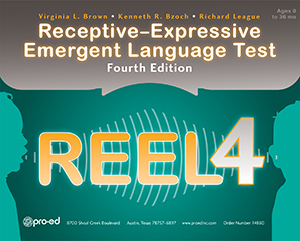Effectively identify language impairments in infants and toddlers
Receptive-Expressive Emergent Language Test-Fourth Edition
REEL-4
Effectively identify language impairments in infants and toddlersChoose from our formats
Kits
Starter & complete kits, print & digital
1 option
Test forms & reports
Booklets, record forms, answer sheets, report usages & subscriptions
3 options
Support materials
Manuals, stimulus books, replacement items & other materials
1 option
All products
All tests & materials offered for REEL-4
5 options